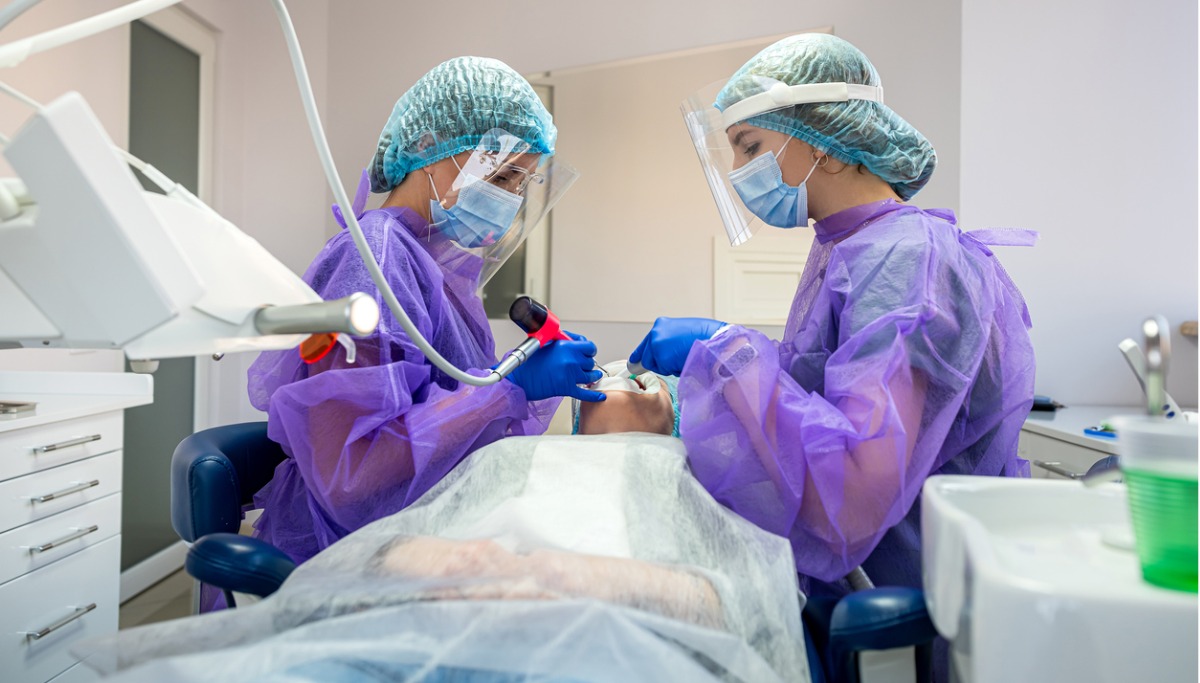Step-by-step dental implant process
Dental implants are artificial tooth replacements that are set into the jawbone, so they look and feel like your natural teeth. If you have severely damaged or missing permanent teeth, dental implants can help you eat, speak, and feel more confident in your physical appearance.
Placement of standard dental implants is an outpatient surgery typically performed in stages over the course of several months. Let’s take a step-by-step look at how it works.
Teeth and jaw assessment
Before recommending a dental implant, your dentist will assess whether the procedure is right for you. A good candidate for dental implants typically has:
- A missing tooth, or an unrestorable tooth that needs to be removed.
- A healthy jawbone that is dense and thick enough to support the implant.
- Gums that are free of periodontal disease.
- No untreated medical conditions that could affect healing, such as uncontrolled diabetes or a compromised immune system.
- Good oral hygiene habits.
If you are a candidate for a dental implant, then your dentist will discuss the procedure with you. This includes how to prepare, your options for anesthesia, and instructions for recovery.
To help plan for the expense, you can ask for a pre-treatment estimate of the total cost for the implant.
Removal of damaged tooth
If you need a tooth or teeth removed, then your dentist or oral surgeon will provide local anesthesia or sedate you and extract your damaged tooth or teeth.
Sometimes, a tooth needs to be sectioned and removed in parts. Your dentist will be able to explain what they anticipate happening during your extraction(s).
Bone grafts
This step is only needed if you do not have enough of a healthy jawbone to support the implant. During a bone graft, your dentist surgically places supplemental bone material into your jawbone.
The bone graft material is typically made of synthetic materials but could also be bone from elsewhere in your body or from a human or animal donor. Whatever the source, the bone graft material helps fill in areas of lost jawbone to support your new implant.
Dental implant body placement
Once the new bone is healthy and strong enough, you can move on to implant placement.
With an endosteal implant, the most common type of dental implant, the body of the implant is a screw-like post that is surgically placed in the upper or lower jaw.
Temporary crown
After implant placement, your dentist will place a temporary crown (a tooth-shaped cap) over the implant body to help protect it and maintain the space while it heals.
Healing and bone growth
After placement, the implant body and bone will need to heal for two to six months. This gives your jawbone time to integrate with the implant body and form a permanent bond between the implant and bone, so you have a healthy base for your finished dental implant.
In some cases, a replacement tooth or appliance can be placed the same day as the implant surgery; however, not everyone is a good candidate for this.
Attaching the abutment
A dental abutment is a metal piece that connects the implant body to the replacement tooth (the crown) or teeth (crowns or dentures). It is attached to your implant and securely holds your new artificial tooth or appliance in place.
Attaching the permanent crown
After the abutment is placed, your dentist will take new impressions of your mouth using a putty or a digital scanner to ensure the proper fit of your new tooth. This impression is then sent to a dental lab where a technician makes your custom crown.
After the crown is finished, then your dentist will affix it to the dental abutment.
Recovering from the procedure
After an implant procedure, it is important to make sure that you recover so your gums and jaw can properly heal.
Tips to care for your implant include:
- Maintain your oral hygiene with regular brushing and flossing
- Visit your dentist for scheduled follow-up appointments and reach out with any problems
- Avoid things that may damage your implant or irritate your gums, including:
- Tobacco and alcohol
- Abrasive toothpastes and hard bristled toothbrushes
- Hard foods, such as nuts and sticky foods like caramel
While you recover, you can expect some swelling or bruising in your gums or jaw, as well as some minor bleeding and pain or discomfort. If any of these problems worsen in the days after your surgery, then contact your dentist or oral surgeon immediately.
Dental implants can restore your smile
The dental implant process is a safe and effective way to replace missing or damaged teeth. If you are interested and in need, then visit your dentist to see if you are a good candidate for the procedure.







